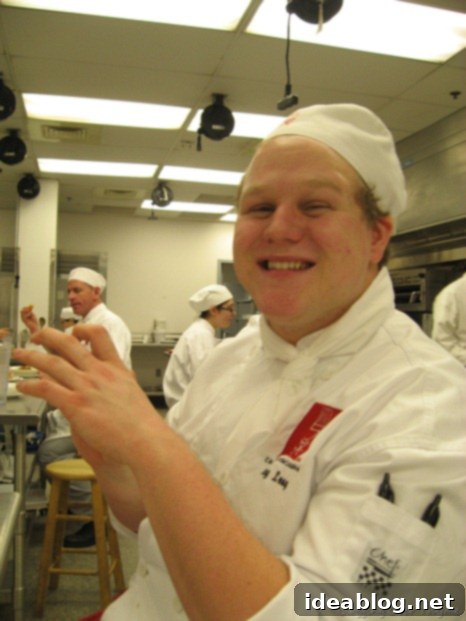A Culinary Day: Mastering Beef Bourguignon, Thai Egg Rolls, Petits Fours, and Puff Pastry Techniques
Today marked another exhilarating and incredibly diverse day in our culinary journey, a true testament to the breadth of skills and cuisines we’re exploring. From the robust, time-honored traditions of French gastronomy to the vibrant, fresh flavors of Southeast Asia, our curriculum left no palate untouched. We delved into the creation of the iconic French classic, Beef Bourguignon, a dish forever synonymous with the legendary Julia Child. Alongside this savory masterpiece, Chef Somchet guided us through the intricate process of making authentic Thai Egg Rolls. Our sweet tooth was satisfied with yet another variation of delicate Petits Fours cookies, and we embarked on the challenging but rewarding first steps of crafting classic Puff Pastry, a versatile foundation destined to grace tomorrow’s menu in a delightful new form.
The alarm clock’s insistent chime at 5:00 am this morning wasn’t exactly met with enthusiasm, but the familiar routine of heading to school always brings a surge of energy and anticipation. Our day commenced with a focused lecture, dissecting the fundamental cooking methods and historical context behind Beef Bourguignon. This essential theoretical groundwork laid, we swiftly transitioned to the kitchen, eager to apply our knowledge and begin the hands-on preparation of this celebrated stew.
The Art of Classic Beef Bourguignon: A Culinary Masterpiece
To truly capture the essence of a classic Beef Bourguignon—and one can almost hear Julia Child’s encouraging voice echoing through the kitchen—the selection of meat is paramount. The dish demands a cut known for its robust flavor and fibrous texture, perfectly suited for long, slow braising. We opted for beef chuck, sourced from the cow’s shoulder, renowned for transforming into incredibly tender, succulent morsels when cooked patiently over low heat. The process begins with meticulous trimming of the beef, ensuring any excess fat is removed, before cutting it into uniform, bite-sized pieces. These pieces are then expertly seared over high heat in a heavy-bottomed sautoir pan. This crucial step isn’t just about browning; it’s about initiating the Maillard reaction, developing a deep, rich crust on the meat that locks in flavor and contributes significantly to the final depth of the stew.
Once the beef achieves that perfect golden-brown sear, it’s carefully set aside, allowing us to focus on the flavorful residue left behind. This golden-brown layer, known as the “fond,” is packed with concentrated flavor. To capture every essence, we introduce a classic mirepoix—a finely diced aromatic base of onions, carrots, and celery—into the pan. These vegetables gently sauté, scraping up the fond and releasing their own natural sweetness. The pan is then beautifully deglazed with a generous pour of red Burgundy wine. This vibrant liquid lifts all those delicious caramelized bits from the bottom, integrating them into the evolving sauce. At this precise moment, a small amount of flour is sprinkled over the mixture, serving as a thickening agent to give the sauce its characteristic velvety texture. This deglazing and scraping process is repeated several times, each iteration building layers of complexity. Following this, rich veal stock is added, along with our carefully bundled aromatics—a traditional bouquet garni comprising fresh thyme sprigs, fragrant peppercorns, a bay leaf, and fresh parsley stems, all poised to infuse the stew with their subtle, herbaceous notes.
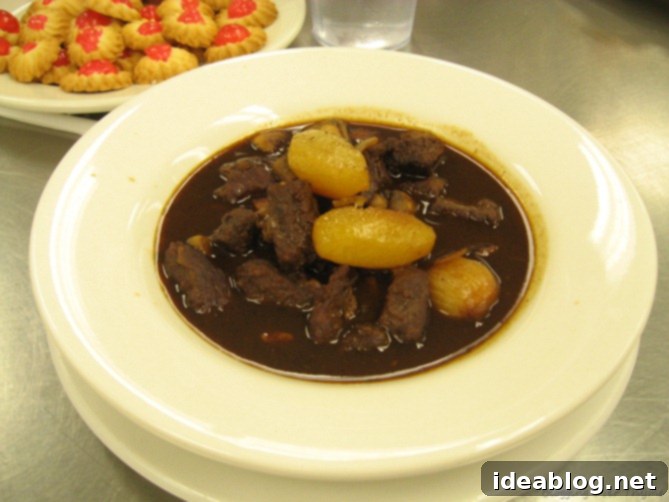
With all the foundational elements in place, the seared beef is returned to the pan, submerged in the rich, aromatic liquid. The entire pot then moves to the oven, where it gently braises at approximately 300 degrees Fahrenheit until the meat reaches an exquisite tenderness, a process that can take several hours. This extended, low-temperature cooking is key to transforming tough cuts into melt-in-your-mouth perfection. Once cooked to perfection, the liquid is carefully strained, preserving the rich sauce. To this magnificent liquid, we reintroduce the now incredibly tender meat, along with perfectly sautéed quartered mushrooms, crispy lardons of bacon, and beautifully caramelized pearl onions. I must confess, peeling pearl onions is a notorious culinary challenge—they are indeed a pain in the butt! However, a clever trick of blanching them whole in hot water significantly eases the process, helping their papery skins loosen up quickly and efficiently, making the effort well worth the sweet, tender results.
Accompaniment: Pommes Fondantes
Our divine Beef Bourguignon was elegantly paired with pommes fondantes, a classic French potato preparation that truly elevates the meal. These are potatoes that have been “tourneed” (a traditional technique where vegetables are cut into an oblong, barrel-like shape, creating an attractive, uniform appearance and ensuring even cooking—yes, we meet again, tourneeing!), and then cooked in a very particular, luxurious manner. The method involves generously greasing a sauté pan with rich butter, arranging the tourneed potatoes in a single layer, and then adding just enough stock to come about one-third of the way up their sides. The pan then goes into the oven at about 325 degrees Fahrenheit. The magic happens during continuous basting, where the potatoes absorb the flavorful liquid and butter, slowly browning and caramelizing on the outside while becoming incredibly delicate, silky, and smooth on the inside. The result is a potato side dish that is both visually stunning and exquisitely flavorful, providing a perfect complement to the robust beef stew. Pretty cool!
Exploring Thai Flavors: Crafting Authentic Egg Rolls
In a delightful pivot from classic French fare, we also tried our hands at making vibrant Thai Egg Rolls, under the expert guidance of Chef Somchet, whose extensive experience in Asian cuisine shone through. The juxtaposition of making these alongside our Beef Bourguignon was certainly eclectic, if not a little unexpected, but the results were undeniably delicious. While I’ll save the full recipe details for a future share, the process of assembling and frying these egg rolls was genuinely enjoyable and engaging. Chef Somchet emphasized a key characteristic of authentic Thai egg rolls: they should be distinctly dry on the inside, never greasy or oily, a common pitfall often found in American-style versions. Our creations certainly lived up to this standard, offering a satisfying crisp exterior and a flavorful, non-greasy interior. Though these were incredibly tasty, in my personal opinion, the Vietnamese spring rolls from “Four Sisters” still hold a special place—even if they aren’t directly comparable in ingredients or preparation, their freshness and delicate texture are hard to beat.
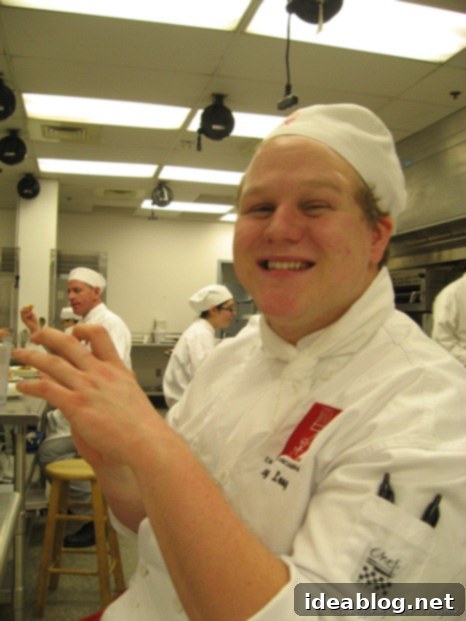
Delicate Sweets: Almond Butter Petits Fours Sec
Our day concluded with another foray into the delicate world of pâtisserie, as we crafted a new type of Petits Fours Sec. The term “petits fours sec” literally translates to “dry small cookies or cakes,” encompassing a delightful range of bite-sized baked goods. Today’s variation was an exquisite almond butter cookie, a confection that beautifully balances nutty richness with a tender crumb. My diligent worktable partner and friend, Hadley, skillfully took charge of this particular task, demonstrating precision and care. The cookies turned out wonderfully, boasting a delightful texture and aroma. We did, however, have a minor, amusing realization halfway through the process: we were meant to use a quarter of a candied cherry for garnish, not a half. Woops! It was a small detail that highlighted the importance of exact measurements and attention to instruction in baking, but it certainly didn’t detract from the deliciousness of our little almond treats.
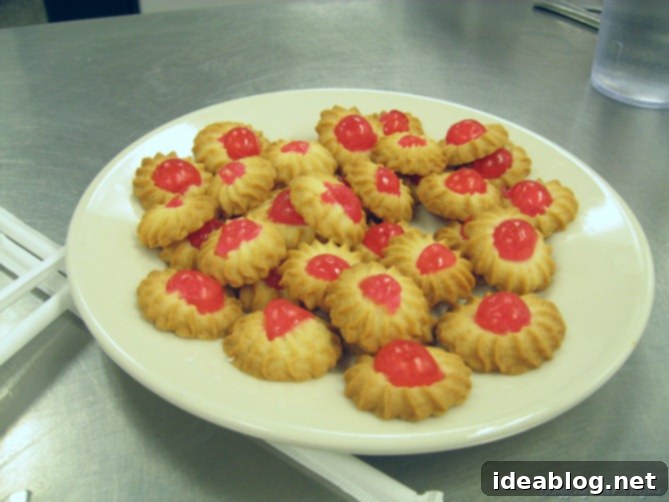
The Foundations of Flaky Perfection: Beginning Puff Pastry
One of the most anticipated moments of the day for me was embarking on the classic process of making Puff Pastry for the very first time! This particular pastry has always held a certain mystique for me; I have always wanted to master it, yet felt incredibly intimidated by its reputation for complexity and precision. The very thought of creating those hundreds of delicate, flaky layers seemed like an insurmountable challenge.
However, after today’s initial lessons, my apprehension has transformed into genuine excitement and a desire to conquer this technique at home. While it is certainly a challenging method to fully explain in mere words, the core principle involves creating a “detrempe” – a relatively lean dough base made from flour, a touch of melted butter, and cold water. This detrempe is then meticulously wrapped around a thick, perfectly rectangular slab of cold butter, known as “beurrage.” The magic begins as this butter-encased dough undergoes a series of careful rolling and folding operations, traditionally referred to as “turns.” Each turn creates successive layers of alternating dough and butter. As the pastry bakes, the water in the butter rapidly turns to steam, pushing apart the dough layers and creating that characteristic, airy “puff” that makes this pastry so universally beloved and versatile. It’s a delicate dance of temperature control, precise handling, and patience, ensuring the butter remains distinct from the dough until the very moment it hits the heat.
Essentially, traditional puff pastry is a labor of love, often requiring a 24-hour process to allow for adequate chilling between turns, which is crucial for relaxing the gluten and keeping the butter firm. Today, we successfully completed approximately 75% of the entire process, laying the groundwork for tomorrow’s final steps and ultimate culinary application. For those curious about more in-depth details and visual guides, Jessica from “How Sweet Eats” offers a fantastic tutorial for making croissants. While croissants incorporate yeast and a slightly different methodology, the lamination process shares many similarities with puff pastry. Homemade croissants remain firmly on my culinary bucket list, a testament to the enduring allure of laminated doughs!
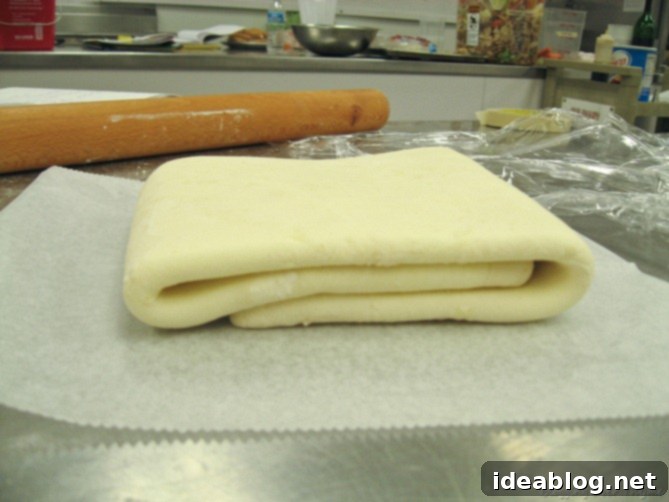
Tomorrow, we will finally get to utilize our beautifully layered puff pastry in a new recipe, and I have a sneaking suspicion it involves cheese! The thought alone is enough to make my mouth water. As the incomparable Julia Child always advised, reminding us of the simple joy of good food: Bon Appetit!
